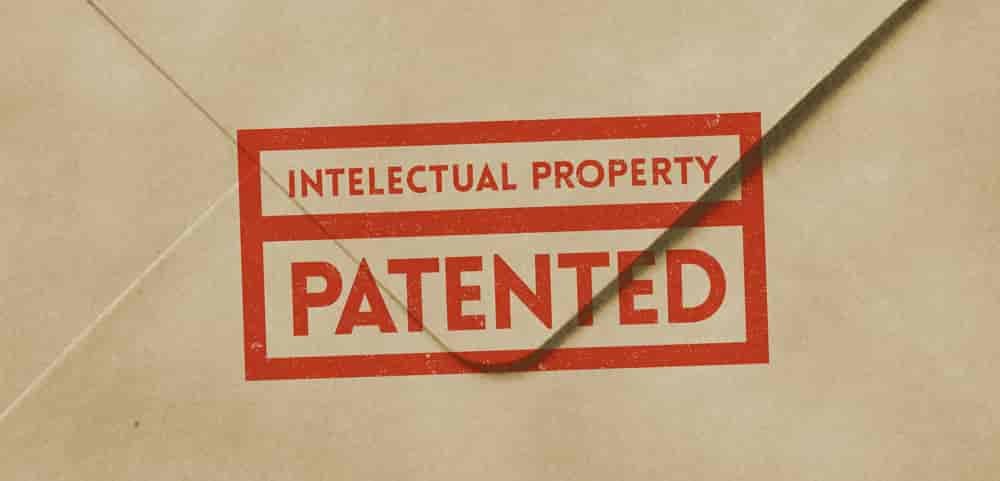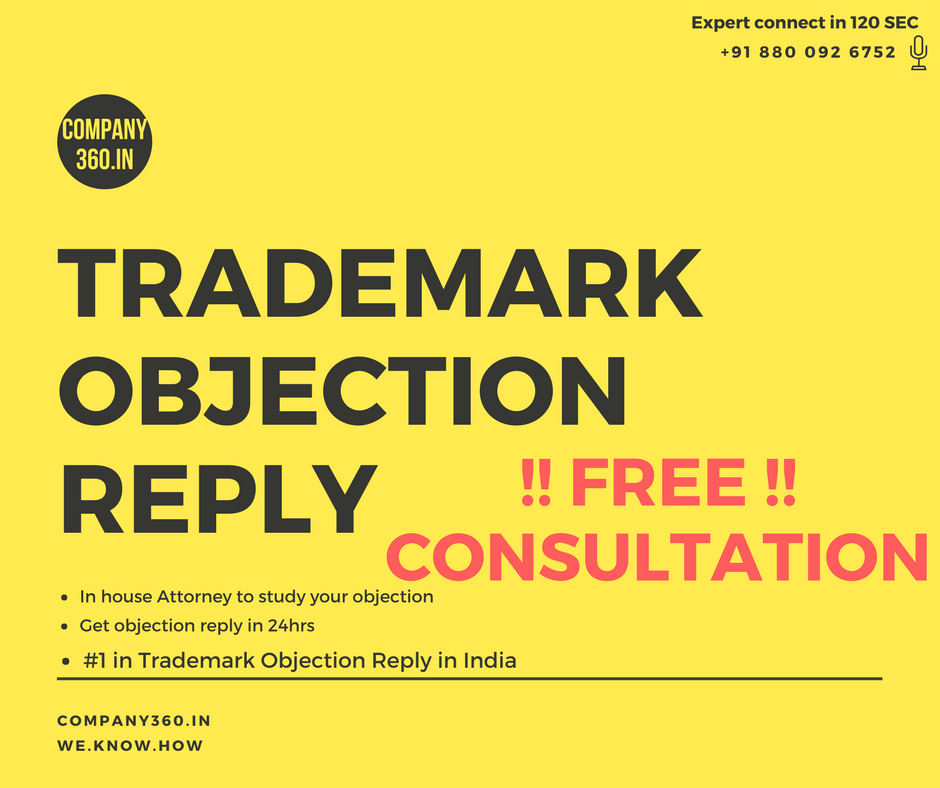
‘Patent law’ is a subset of the Intellectual Property law, and is guarded thus by the frameworks of an intangible asset. A patent essentially refers to the patentee’s exclusive right to prevent third parties from selling, using, offering for sale or importing their patented product/ process without their consent. The patent owner or the patentee has a monopoly to do any such acts with the patented product/process as they may wish and has the right to guard against infringement of the patent, while also ensuring that a healthy competitive atmosphere is maintained in the industry.
So what is patent infringement? The term ‘infringement’ is nowhere defined in The Patents Act, 1970, and thus the meaning of ‘infringing a patent’ is to be gathered from the rights that are guaranteed to a patentee in the patent specifications. These rights conferred upon the patentee are primarily the boundaries or limits of the use of the patent. The claim specifications (inserted at the end of the Patent application) demarcate in clear and non-ambiguous terms, the extension of the rights that can be protected against infringement. Any intrusion into the boundaries set by these claim specifications can be called as an ‘infringement’ of the patent.
It is similar to the ‘trespass’ that is committed with respect to physical/traditional properties. Entering, disturbing or in general intruding upon something that is privately owned is called as trespassing, and it basically translates to ‘infringement’ in the case of intellectual properties.
###Determining Patent Infringement:
The following questionnaire can help you understand if there has been an infringement of a patent-
-
Identify the specific act that infringes on the patent rights
-
Check if it is within the scope of the invention as per claims (invention means a new product or process involving an inventive step and capable of industrial application)
-
Is there any violation of any right of the Patentee? (intrusion of boundaries set by the claim specifications)
-
Who is liable for the act?
-
Whether the said act comes under the ambit of exceptions in Sections 49 (govt. use and research) and 64 (causes of revocation) of The Patents Act, 1970.
An act of patent infringement can be summarised to mean any commercial use of the patented invention without the consent of the patentee.
The rights of a patentee are stated in Section 48 as follows- the Act confers upon the Patentee the exclusive right to prevent third- parties [who do not have their consent] from using, selling, offering to sell or importing the patented invention (product/process) in India.
This section is to be read in consonance with Section 10 which talks about Contents of the specification. Sub-section 4(c) of the same specifies that the specifications must end with a claim or claims defining the scope of the invention for which protection is claimed. Further, sub-section 5 makes it clear that the claims must be in relation to a single invention or a single inventive process. They also have to be precise and succinct, and should revolve around the subject matter of the patent. These two sections pretty much sum up the protected rights of the patentee according to the Patents Act.
###Types of Patent Infringements
1. Direct Infringement: This is the most commonly found infringement, wherein the incriminating product is produced, utilized, sold or attempted to be sold, and imported without authorization from the rightful owner of the patent. It is usually identical to the patented invention, in function or in design.
2. Indirect Infringement: This occurs when a party induces or makes another person commit direct infringement of the patent. It includes 1) buying or importing materials that are to be used as part of a patented process, and 2) inducement by a third party causing someone to commit a direct infringement (this usually implicates distributors and retailers).
All Elements Test:
The types of infringements bring us to an interesting doctrine termed as ‘Doctrine of Equivalents’. It is a doctrine that has enabled courts to decide whether the products/processes in contention are actually identical or simply substantially similar. It distinguishes an infringement as- literal infringements (identical to the patent) and infringement under the doctrine of equivalents (substantially similar).
This doctrine is useful in cases where a party makes a copy of the patented product and tweaks it with a few changes, and profits from it. Since there is no ‘direct’ infringement of the patent, it can be difficult to raise a claim and get relief. Here, the application of the doctrine of equivalents determines if the alleged product performs substantially the same function in substantially the same way to obtain the same result. It tests the ‘equivalence’ of the composing materials, production processes and results.
The doctrine is applied using the ‘All elements test’, which stipulates that all elements of a patent and the product must be examined individually to compare their similarities, and not as a whole. The test first originated in the Supreme Court of the USA, in the case of Graver Tank & Mfg. Co. v. Linde Air Prods., Inc. (1950), wherein it was held that the patentee may invoke this doctrine to proceed against the producer of a device if it performs substantially the same function in substantially the same way to obtain the same result. This doctrine was further cemented in the case of Warner-Jenkinson v. Hilton Davis Chemical Co. (1997), in which the ‘All elements’ rule was applied so that every individual element could be compared and examined to check the identicalness of the products or processes. The degree of infringement cannot be decided just on the basis of a lukewarm examination of the appearance of the products. Every part, every method used to assemble the product or create the process has to be examined to determine the amount of ‘sameness’ between inventions, and verify the claim of infringement.
This doctrine was first seen in India in the case of Ravi Kamal Bali vs Kala Tech and Ors. (Bombay High Court, 2008). The facts in brief are- the plaintiff sought an injunction and damages against patent infringements of its products (tamper locks) by the defendant. The Plaintiff contended that the Defendant’s products do the same work, in substantially the same way and accomplished substantially the same result and therefore constitute an infringement of the Plaintiff’s patents. This was denied by the defendant, who stated that they used a different method to produce their products. The Judge ordered a deeper inspection of the methods and materials used to devise the products, and upon comparing every element in a tabular form came to the conclusion that indeed the incriminating product was created using highly similar methods, and basically did the same work, thus making a case of infringement. The judge accepted that the two products worked on the same principles and also stated that “the difference in the shape of the main body does not by any stretch of imagination constitute the Defendants product as a separate or a new invention.” It had no functional novelty, and hence could not be seen as an ‘inventive step’. The Judge also held that only the patentee of the main invention was entitled to improve, or modify the invention, or permit anyone to benefit from the main invention.
Though the judgement was reserved, and the injunction was not granted, yet this case remains important in India’s patent law for bring the doctrine of equivalents to our country.
Another case which saw the use of this doctrine was that of Imphase Power Technologies v. ABB India (Karnataka High Court, 2016). The case was an appeal filed against the Order of a Trial Court against Imphase, restraining it from infringing ABB’s patent and from misappropriating their confidential information (Imphase was founded by former employee of ABB). This case dealt with multiple topics like trade infringement, patent infringement as well as misappropriation of confidential information. As regards the patent infringement, ABB held patent rights over a ‘Dynamic Reactive Power Compensator’ – STATCON. They contended that product of Imphase was infringing on their patent rights as it was substantially identical to ABB’s product. The Court saw no merits in the minute, technical differences presented by Imphase and held that ABB had prima facie brought forth enough evidence to merit an order of injunction. Thus the Court held the existing injunction to be valid, and dismissed the appeal with no costs.
The All Elements test determines ‘substantiality’ based on two things-
a. Knowledge- Whether persons with skill in the field know of the equivalence in the products
b. Intent- Whether the product was manufactured by intentionally using the same method or the person unintentionally arrived at the same result.
Finally, if ‘equivalence’ can be established regarding the elements of the product or the process of the patented invention, then it can be held as a case of patent infringement. Regardless of outward appearance and the package, if the product performs substantially the same function, possibly in the same way, then it can be termed as a patent infringement.
##Defences that can be used in a case of infringement
In today’s fast paced technological world, it is important to be updated about not only patent infringements, but also the defences that can be used against a claim of patent infringement. There is cutthroat competition in every field which advances with IP law. Thus a person dealing with patented products/processes needs to be prepared for an infringement suit or claim. The Patents Act, 1970 itself provides for several defences, while there are others that are derived from juristic interpretations.
Firstly, who can institute a suit for infringement of a patent?
a) The Patentee (patent holder)
b) Exclusive licensees (person granted exclusive/ compulsory license for use of patent)
c) Co-owners of the patent
Who may be sued for infringement of a patent?
a) Any person or their agent infringing the patent
b) Joint tortfeasers (since infringement is a civil wrong) this includes the retailers, distributors, etc.
Now- the defences that can be used in a case of infringement:
-
Section 47- This section deals with Governmental Use and Research Exemption of a patent. Any grant of a patented product or process is subject to use by the government, merely for its own use. It may be used for the purpose of experiments and research- which includes educational purposes, and more. In case of medicines and drugs, the government may import any such medicine that it deems fit to any hospital/dispensary for distribution or for its own use. In such cases, a claim of patent infringement can be easily refuted.
-
Section 49- This section males it clear that the use of foreign vessels (aircrafts/ machines/ vehicles/ boats) temporarily or accidentally within the territory of India, will not be termed as infringement under the ambit of the Patents Act. The use of the invention on board the vessel, even if it is in the territorial water of India, shall not constitute a claim of patent infringement.
-
Section 107. A (a) – Bolar exemption- it is a defence pertaining to pharmaceutical companies. The principle ensures that a third party can use a patented product solely for uses reasonably related to the development and submission of information required under any law. The Bolar exemption is thus a great safeguard for pharmaceuticals to conduct clinical trials and apply for a patent as soon as the current one expires.
Clinical trials sometimes take years to yield results, after which it is submitted to the Central Drug Standard Control Organisation for the evaluation of safety and efficacy. During this time, the patentees of existing drugs hold almost monopolistic rights to restrain competitors from launching generic/ similar products in the market. After the expiry of twenty years, they can simply extend the term of the patent and thus perpetually block the competition. To prevent this, the Bolar exemption principle came into existence in the landmark US case Roche Products v. Bolar Pharmaceuticals. In this case, initially the Court held Bolar guilty of infringement. Later, the Congress passed a law permitting the use of patented inventions in research to seek Food and Drug Administration approval, overturning the Court’s decision. Due to this principle, third parties can now use the patented products without hindrance (without patent holder’s authorisation) and before the expiry of the patent. This enable the companies to launch their generic product in the market as soon as the patent expires.
An Indian example of the Bolar exemption is the case of Bayer Corporation v. Union of India, decided by the Delhi High Court in 2019. This is a landmark judgement that finalised the Bolar principle in Indian patent law. The case was a writ petition by Bayer against the Orders of the Controller- for granting a Compulsory License to Natco Pharmaceuticals Limited (Natco) of the drug Nexavar. The Court held that-
“Sale, use, construction of patented products (by individuals and entities that do not hold patents) in terms of Section 107A of the Act for purposes both within the country and abroad is authorized and legal provided the seller ensures that the end use and purpose of sale/export is reasonably related to research and development of information in compliance with regulations or laws of India (or the importing country), for its submission in accordance with such laws.”
The Court further laid down factors to be taken into account in such cases-
(1) The patent granted;
(2) The nature of the product or elements sought to be exported;
(3) The details of the party or party importing the product,
(4) The quantity sought to be exported
(5) Other particulars with respect to the end use of the product
All which establishes that it is solely for research and development of information to regulatory authorities in the country.
-
Section 107. A (b) – Parallel Imports- This section says that importation of patented goods, with the permission of any person who is authorised to produce, sell and distribute the product (licensee), shall not constitute as an infringement.
This allows a person to legally import patented products and processes without the actual consent from the patent holder.
This section is based on the Doctrine of International exhaustion of Patent Rights, which basically means that once the goods are sold for a lawful consideration, the patentee loses all control over them. Therefore, patented goods can be imported from different countries without express authorisation of the patentee. Parallel importing ensures a healthy competitive market and helps to bring down prices of other generic goods in the market. How parallel importing works- a distributor or retailer imports patented goods at reduced prices to the country through any other wholesale distributor. They may already market the product. This enables a competitive spirit in the market as it provides an impetus to other sellers of generic products in the country to deliver better customer service satisfaction or reduce their own prices. -
Compulsory license- Section 84 (1) states that any interested person can make an application to the Controller for a grant of Compulsory license based on the following grounds-
a. Reasonable requirements of the public with respect to the patented product have not been satisfied
b. The patented invention is not available to the public at affordable prices
c. The patented invention does not work in the territory of India.
This provision helps to deal with health crisis, enables the introduction of better and oft-expensive patented processes or products to the country (eg, medicines). It also prevents the abuse of a patent as a monopoly and allows for its commercial exploitation by other interested persons. The purpose of a compulsory license is explained in Section 89, which states that the licensee be granted to ensure that patented inventions are worked on a commercial scale in the territory of India without undue delay and to the fullest extent that is reasonably practicable and that the interests of any person for the time being working or developing an invention in the territory of India under the protection of a patent are not unfairly prejudiced.
Section 92 contains provisions for compulsory licences on notifications by Central Government- In case of national emergencies, extreme urgencies or a case of public non-commercial use, which includes public health crises, relating to Acquired Immuno Deficiency Syndrome (AIDS), human immunodeficiency virus (HIV), tuberculosis, malaria or other epidemics, the compulsory license will be granted immediately (by not applying the procedure laid down in Section 87). This is so that the articles manufactured under the patent shall be available to the public at the lowest prices, as soon as possible.
Section 92 A applies to export of patented pharmaceutical products in certain exceptional circumstances. This enables the export of patented pharmaceutical products to any country having insufficient or no manufacturing capacity in the pharmaceutical sector for the concerned product to address public health problems (provided compulsory licence has been granted by such country or such country has, by notification or otherwise, allowed importation of the patented pharmaceutical products from India). This section has been introduced in view of the Doha Declaration on TRIPS Agreement and Public Health (TRIPS refers to Trade Related Intellectual Property Rights System, of which India is a member). This provision is specifically inserted to address the public health crisis/ concerns of another country with insufficient infrastructure. The Section says that the license shall be inclusive of ingredients necessary for their manufacture and also diagnostic kits required for their use. It is also referred to a ‘cross border licensing’.
- Section 64- According to Section 107, every ground of revocation of a patent as given in Section 64 is available as a defence and as a counter-claim against a claim of patent infringement.
Gillette defence: This defence is specified in Section 64 (e) and (f), which state that a patent can be revoked on the grounds of being based on prior art or what was publicly used/ known. Essentially, it means that the invention lacks novelty, and is a mere reproduction of already- present knowledge, and can thus be revoked. The name is derived from the 1913 case of Gillette Safety Razor Co v Anglo American Trading Co Ltd, where it became difficult for Gillette to show that their razor was a unique invention, as it was originally based on a prior art. They were able to get validity for their patent, however, no case of infringement could be made out. This defence is based on the principle that the invention is not a novelty. It is an invention of obviousness, based on public knowledge and prior use, and is not even patentable in the first place. This is a very successful defence to prove the invalidity of a patent and safeguard your own. The defendant can claim that their invention was based on prior publication or prior knowledge and use, which either means that the defendant was not infringing on the patent, or that the patent itself is invalid.
###Revocation of a patent can also be granted in the following cases:
i) The claim of invention was already claimed by another in priority.
ii) The patent was granted to a person not entitled to receive it.
iii) The patent was obtained wrongfully, in contravention to the rights of the petitioner.
iv) The subject matter of the claim cannot be deemed as an ‘invention’ under this Act.
v) Invention lacks novelty; does not involve an ‘inventive step’.
vi) Invention lacks usefulness.
vii) Claim specification do not disclose adequate information regarding the best method of working of the product/ process.
viii) The claim specification does not entirely disclose the amount of rights claimed. It is insufficient to properly demarcate the area patented.
ix) The patent was obtained on a false suggestion or representation.
x) The subject of any claim of the complete specification is not patentable under this Act.
xi) The patent application contains information that is materially false.
xii) The patent application does not disclose or wrongly states the place of origin or origin of biological matter of the patent.
xiii) The subject matter of the claim was already known/ in practice within another indigenous community in India.
Apart from this, the High Courts can also revoke the patent on a petition from the Central Government, for failing to comply with the request of the Central Government to make, use or exercise the patented invention for the purposes of Government within the meaning of section 99 upon reasonable terms.
Thus, a patent can be proved to be ‘invalid’ on the basis of all the above mentioned grounds for revocation. Invalidity is also one of the most commonly used defences in a case of patent infringement.
###Conclusion:
Defending a claim against patent infringement can be a tricky business, however it is not impossible. The defences mentioned above are a few basic defences that can be adopted to refute such a claim, and if applied expertly, they can definitely help you pull through.
Every case is different, including a variety of different circumstances and scenarios. Hence it requires a comprehensive study of the facts to formulate the best strategy for defence against a claim. The defences provided by the Act should be applied in accordance with the facts of the matter.
Lastly, the technological advancement of the world necessitates the development of the Indian legislation and the judiciary, to formulate techno-legal laws and principles that can be adhered to. It will lessen the ambiguity surrounding such cases and provide concrete formulations that can be looked up to in the future.










